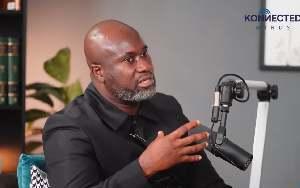A GNA feature by Richardson A. Baidoo
Accra, Sept. 15, GNA - Between the months of August and March thousands of different species of marine turtles come to lay their eggs along the about 70 kilometre stretch of the coast of Eastern and Western Nzema (Jomoro) Districts in the Western Region of Ghana. Perhaps the entirely clean environment and the scenic beauty of the white sunny sandy beaches are a source of attraction for the turtles that travel thousands of kilometres from the other parts of the Atlantic Ocean to nest at these areas.
Unfortunately this huge potentia l tourist attraction that could turn round the fortunes of these coastal communities and the districts as a whole is yet to be tapped and fully developed. Out of ignorance the activities of the people go to destroy this goldmine that could be developed into a marine turtle watch to boost tourism. They hunt and slaughter the animals in their hundreds for food.
Turtle meat and turtle eggs are delicacies in many communities and serve as income for hunters.
Other predators like dogs and pigs dig for turtle eggs and eat hatchings too during the nesting period. According to researchers, these have contributed to the disappearance of the hawk bill and the loggerhead turtles from the shores of the country.
The common species left are the olive rid-ley turtle, the green turtle and the leatherback turtle. The kemps rid-ley and the Australian flat back are other turtle species found in warm and temperate oceans. Marine turtles are among the wholly protected animals under the wildlife conservation regulations of 1971, Legislative Instrument 685.
In support of this, and realizing the tourism potential of marine turtle conservation, the Ghana Wildlife Society with support from the Dutch Government launched the marine turtle, conservation component of the Amansuri Conservation and Integrated Development Project. The turtle conservation taskforce in many coastal communities were formed to check hunting and slaughtering of the animals and the destruction of their eggs. Fishermen were even entreated to release turtles that get trapped accidentally in fishing nets.
Ms Cynthia Cudjoe, an officer of the Ghana Wildlife Society, told the GNA at Benyin in the Jomoro District that the project to a large extent achieved success in marine turtle conservation in the area. She called for international as well as Government support to revive and sustain the marine turtle conservation efforts because the people might soon return to their old ways to destroy the modest gain achieved during the project period.
In another development, Ms Cudjoe said the Italian Government has embarked on a project to restore Fort Apollonia into a historical site. When completed part of the fort would be used as a museum to preserve the culture of the people of Nzema. Fort Apollonia was built at Benyin by the British in 1765. Between January and June this year, 5,619 Ghana Cedis that was realized from visitors to the fort was donated to the Western Nzema Traditional Council. 15 Sept. 09
Opinions of Thursday, 17 September 2009
Columnist: GNA














